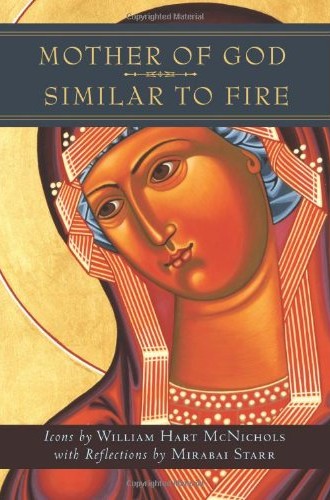A thousand forms of Mary
A few years ago, when I was researching a story
in Veracruz, Mexico, the proprietor of a small cantina and I struck up a
conversation. When talk turned to religion, Señor Gonzalez shyly asked if I
would like to see one of his most highly prized treasures. He led me to the
upstairs banquet room, where an errant barbeque had left a smoke stain on the
wall.
"Do you see her?" he asked me anxiously. A lifelong
Protestant, I wasn't immediately clear to whom he was referring. (I hadn't been
in Mexico long.) I stared at the smoke for a while, and with Señor Gonzalez's
help, I was eventually able to see her: the face of the Virgin Mary appearing
to him in smoke.
During the rest of my visit, these appearances of Mary were
shown to me frequently: on rocks, on moss, in food, on walls. I learned quickly
that Mary's appearance was a mysterious commonplace, a way to see God in
everything.
This is still difficult for me to grasp, but a new book is a
dramatic help. This book is a series of icons painted by Catholic priest William Hart McNichols, with prayers written
by acclaimed translator and self-described "Jewish Sufi Buddhist who loves
Christ" Mirabai Starr. Their collaboration deserves lingering attention.
Every other page contains one of the "1000 forms" of Mary
from cultures all over the world, accompanied by a variety of seasons, color
pallets and moments of human life. Many of the icons show Mary "similar to
fire," just as she was in the smoke in Veracruz. Mary speaks from mountains,
plains and deserts—in suffering and in hope.
In one icon Mary stands in the presence of the angel with a
Hebrew text in her hand. Starr writes:
May I learn to exalt in the
ordinary moments of my life
and embrace God everywhere
in everything
always.
Amen.






